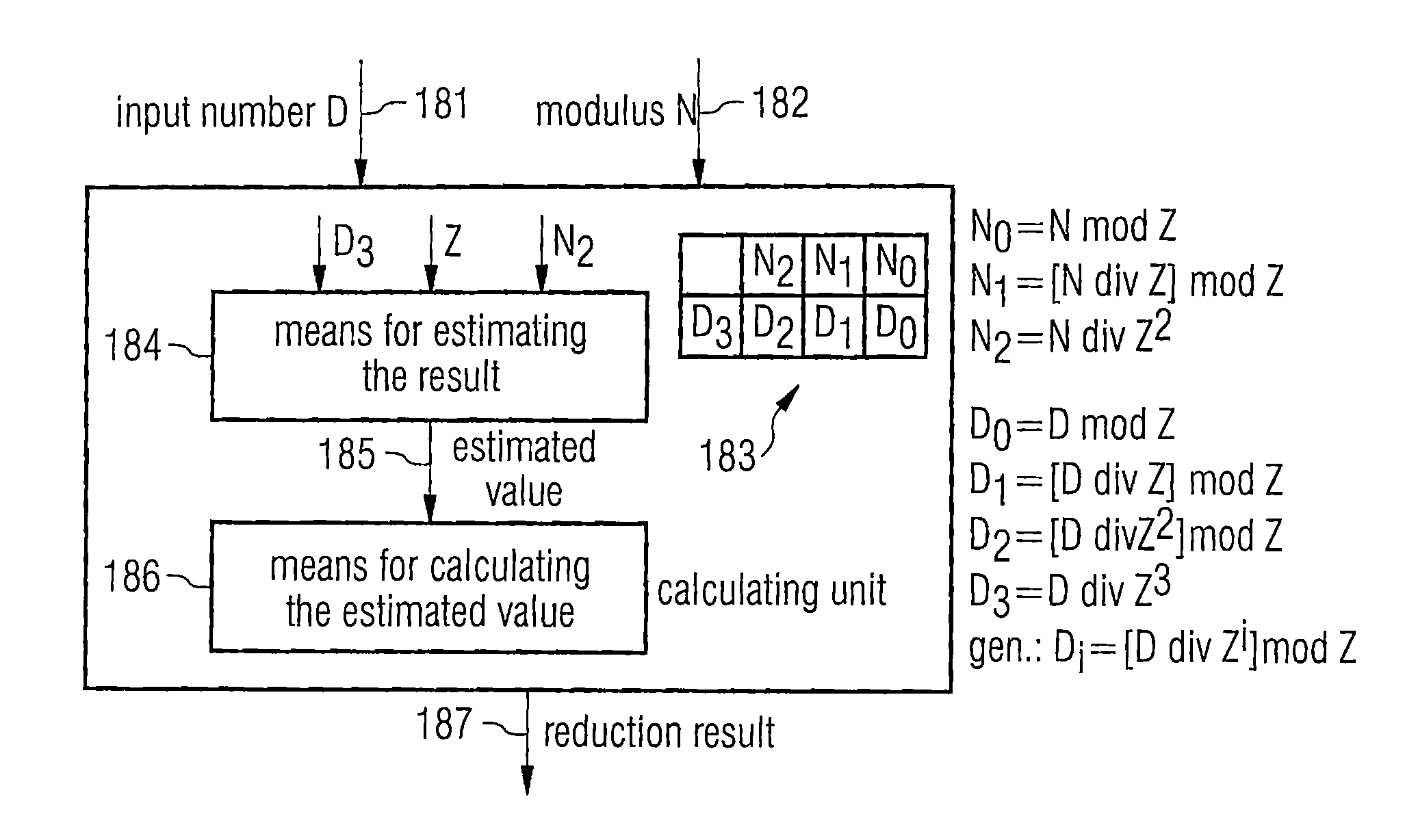Calculating unit for reducing an input number with respect to a modulus
a technology of calculating unit and input number, applied in the field of calculating unit for reducing input number with respect to modulus, can solve the problems of no longer easily possible, limited key length of crypto co-processor in chip card or computer (for example in tpm module), and no longer readily usable already existing co-processors
- Summary
- Abstract
- Description
- Claims
- Application Information
AI Technical Summary
Benefits of technology
Problems solved by technology
Method used
Image
Examples
Embodiment Construction
[0085] Preferably, the result of an integer division of the input number by the modulus, on the basis of which there is then performed the modular reduction, is estimated by not using the whole number and the whole modulus, but only a most significant portion of the number and a most significant portion of the modulus. Furthermore, for estimating the result of the integer division, there is also used the division number on the basis of which the most significant portions of the number and the modulus are determined. This estimated result, which is a short number, may then easily be stored in a register of the calculating unit and does not have to be treated separately. The reduction result per se is then determined from the input number based on the estimated result and a subtraction of the product of the modulus and a value derived from the estimated result. According to the invention, for the reduction there is thus first used the reduction algorithm, which does not subtract one m...
PUM
 Login to View More
Login to View More Abstract
Description
Claims
Application Information
 Login to View More
Login to View More - R&D
- Intellectual Property
- Life Sciences
- Materials
- Tech Scout
- Unparalleled Data Quality
- Higher Quality Content
- 60% Fewer Hallucinations
Browse by: Latest US Patents, China's latest patents, Technical Efficacy Thesaurus, Application Domain, Technology Topic, Popular Technical Reports.
© 2025 PatSnap. All rights reserved.Legal|Privacy policy|Modern Slavery Act Transparency Statement|Sitemap|About US| Contact US: help@patsnap.com



